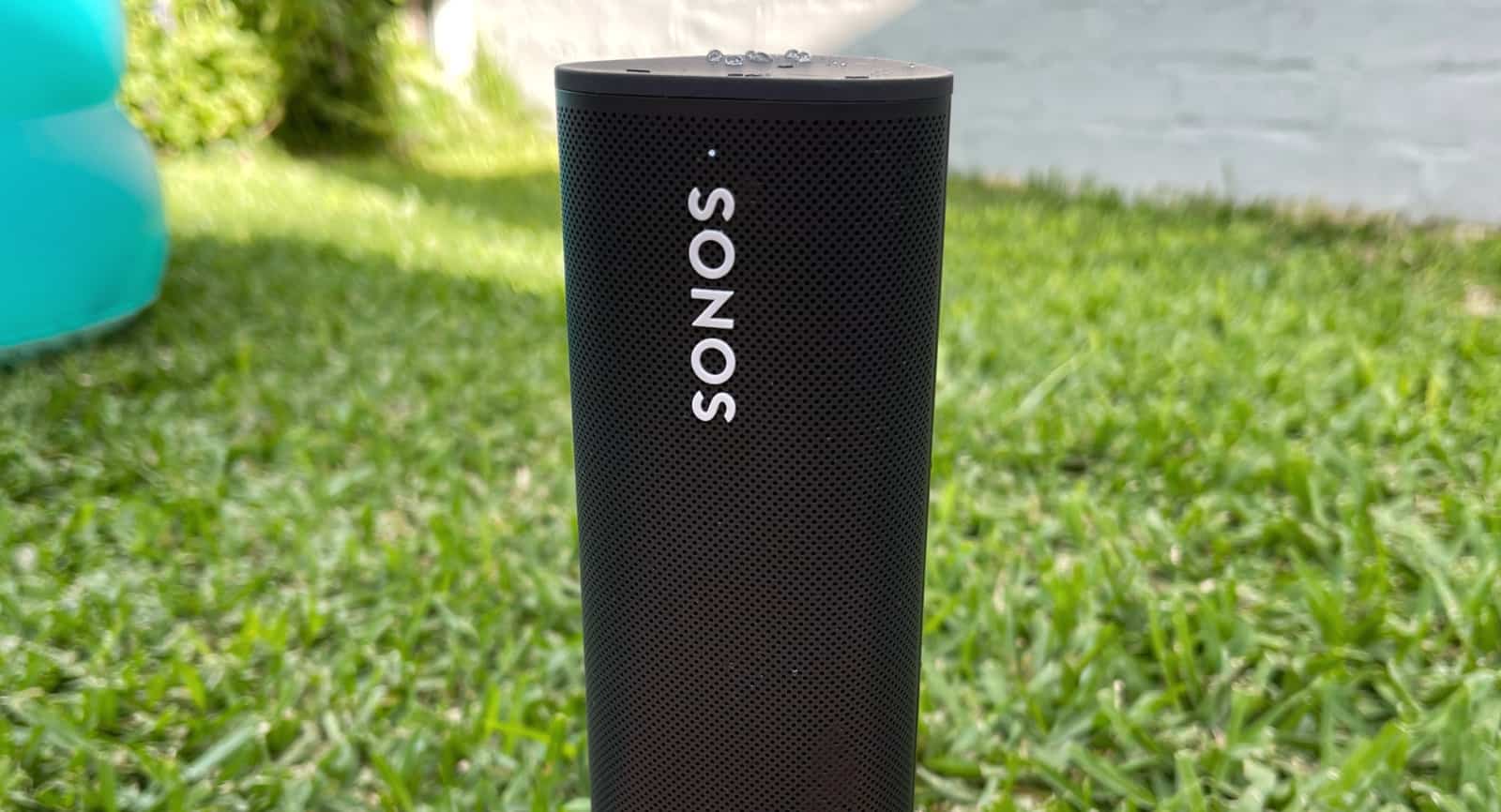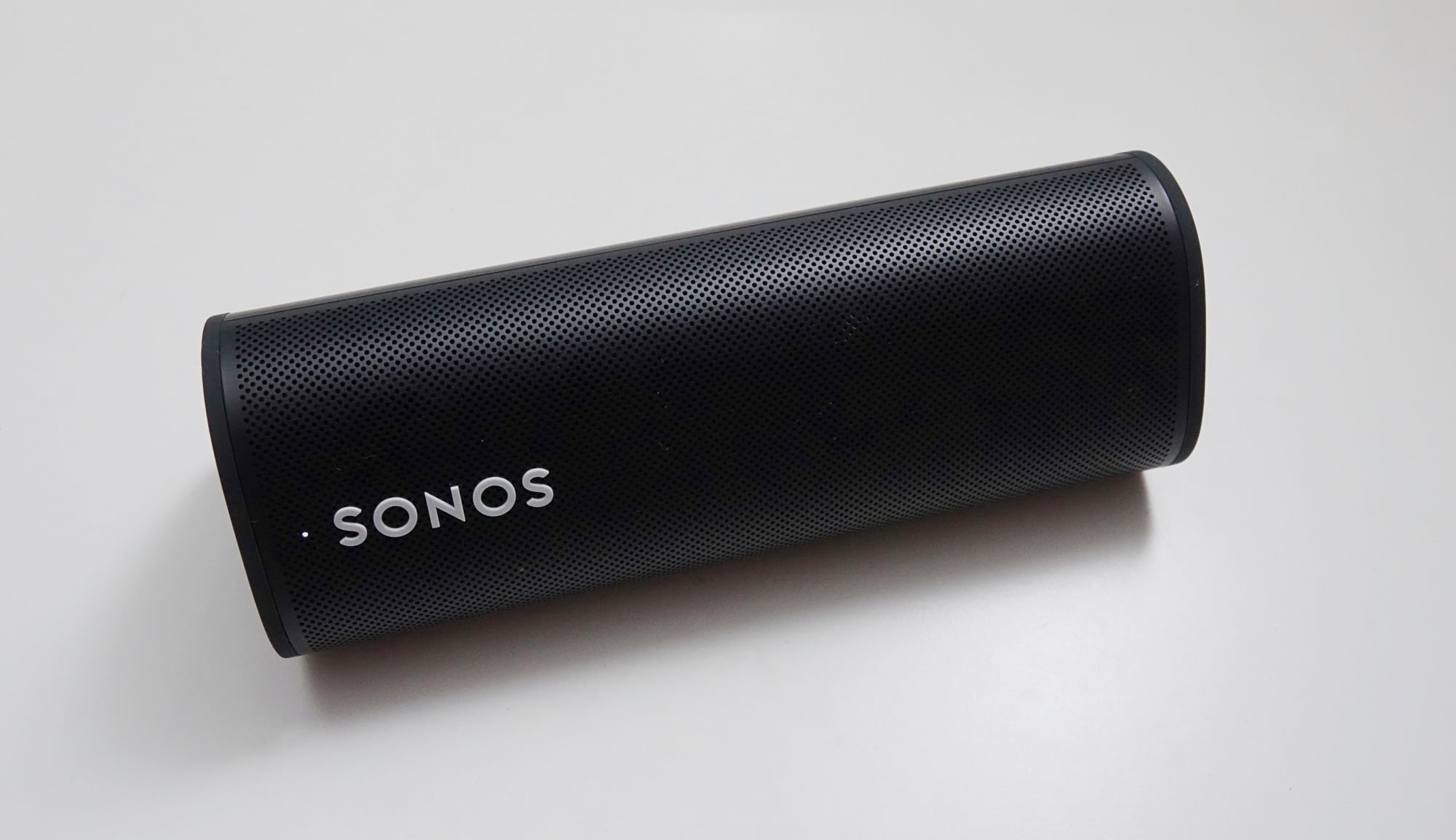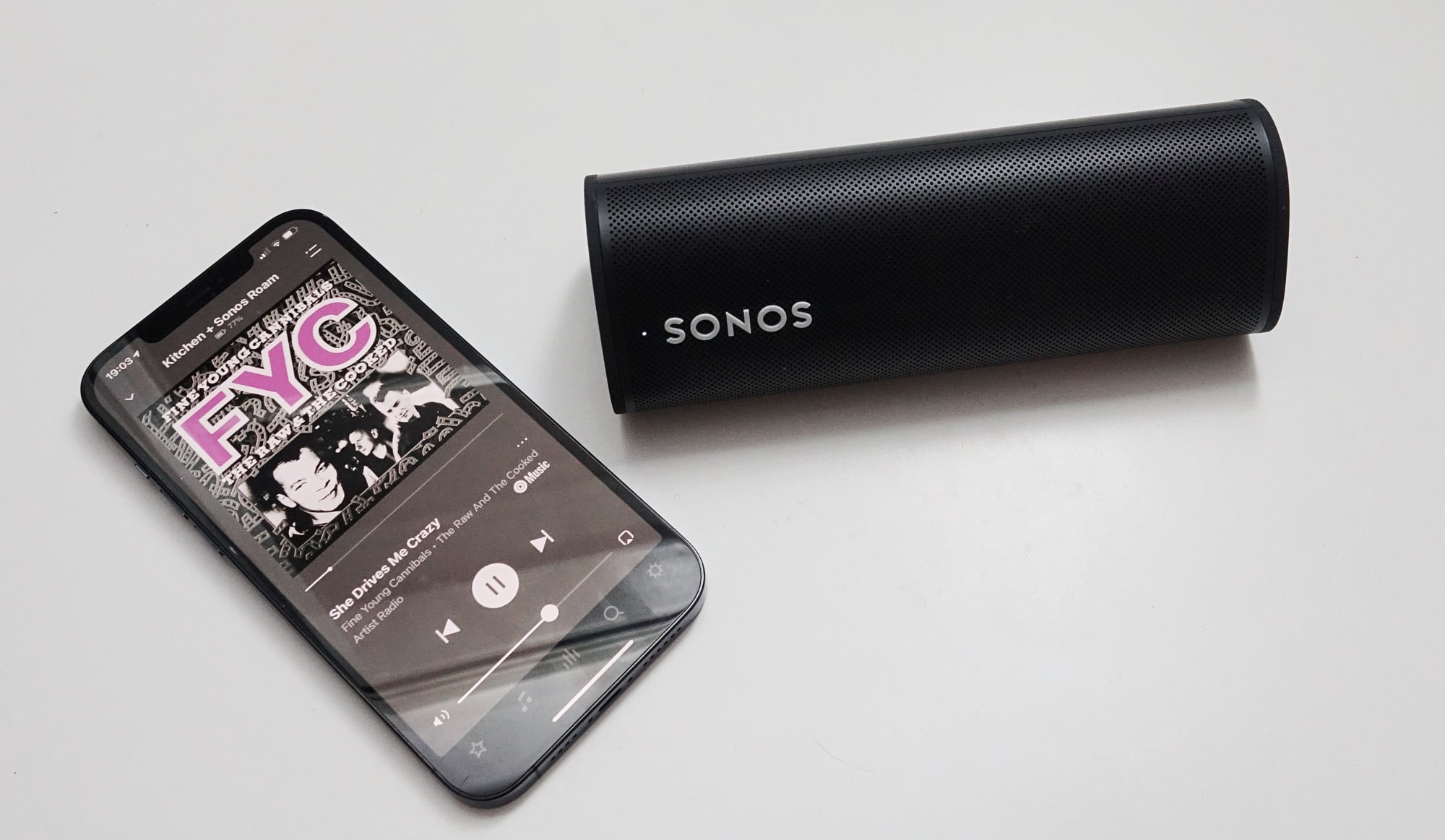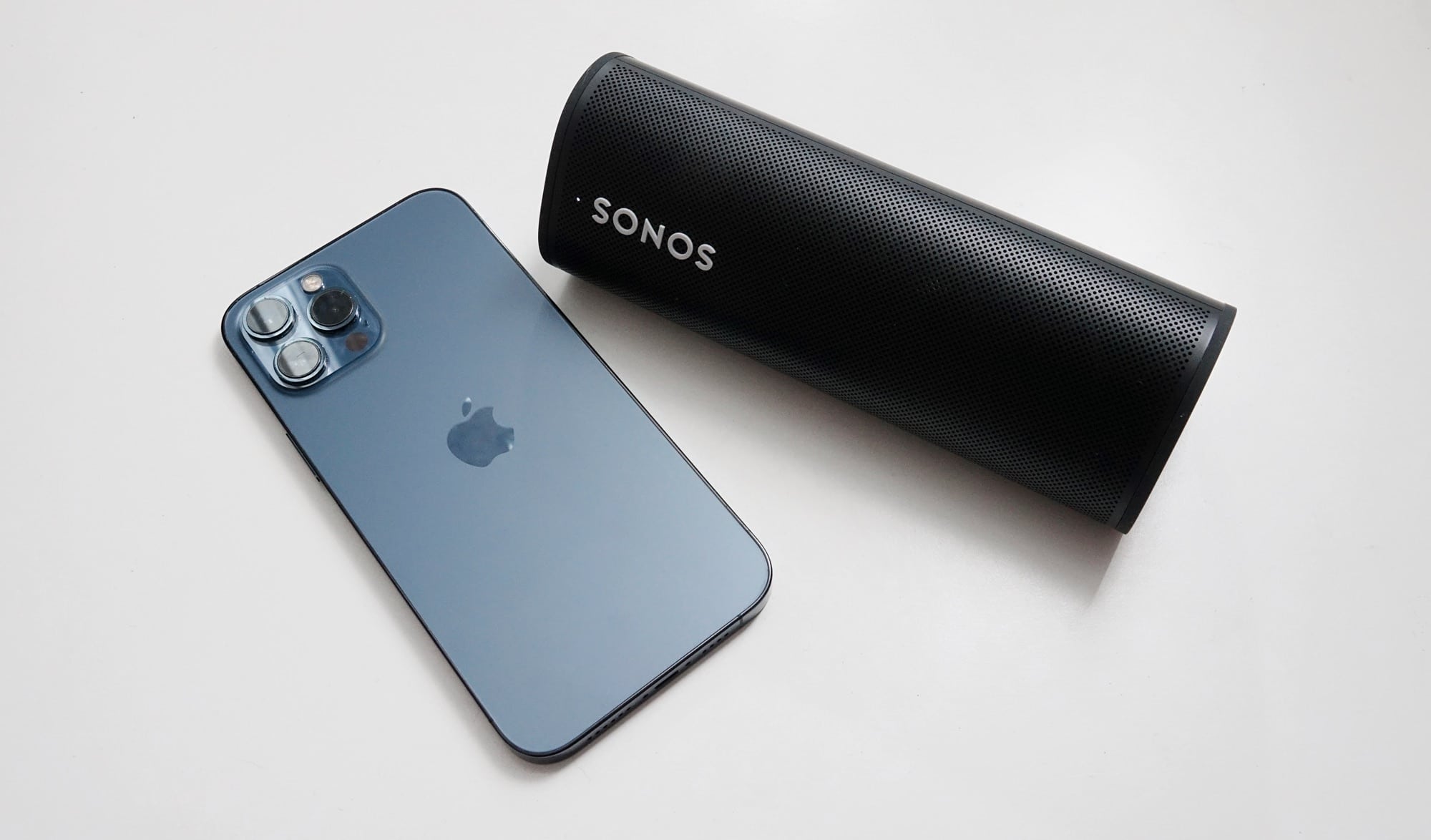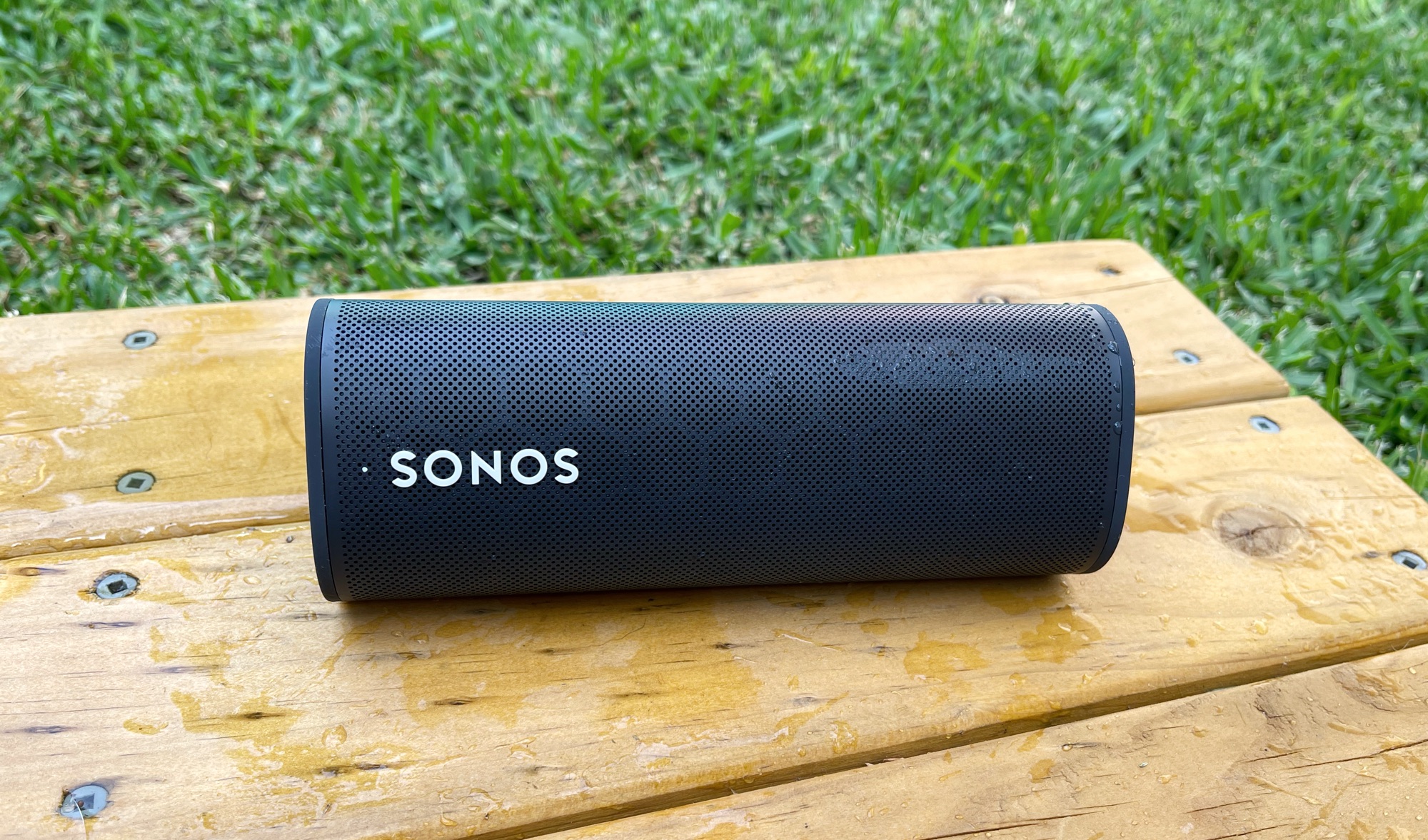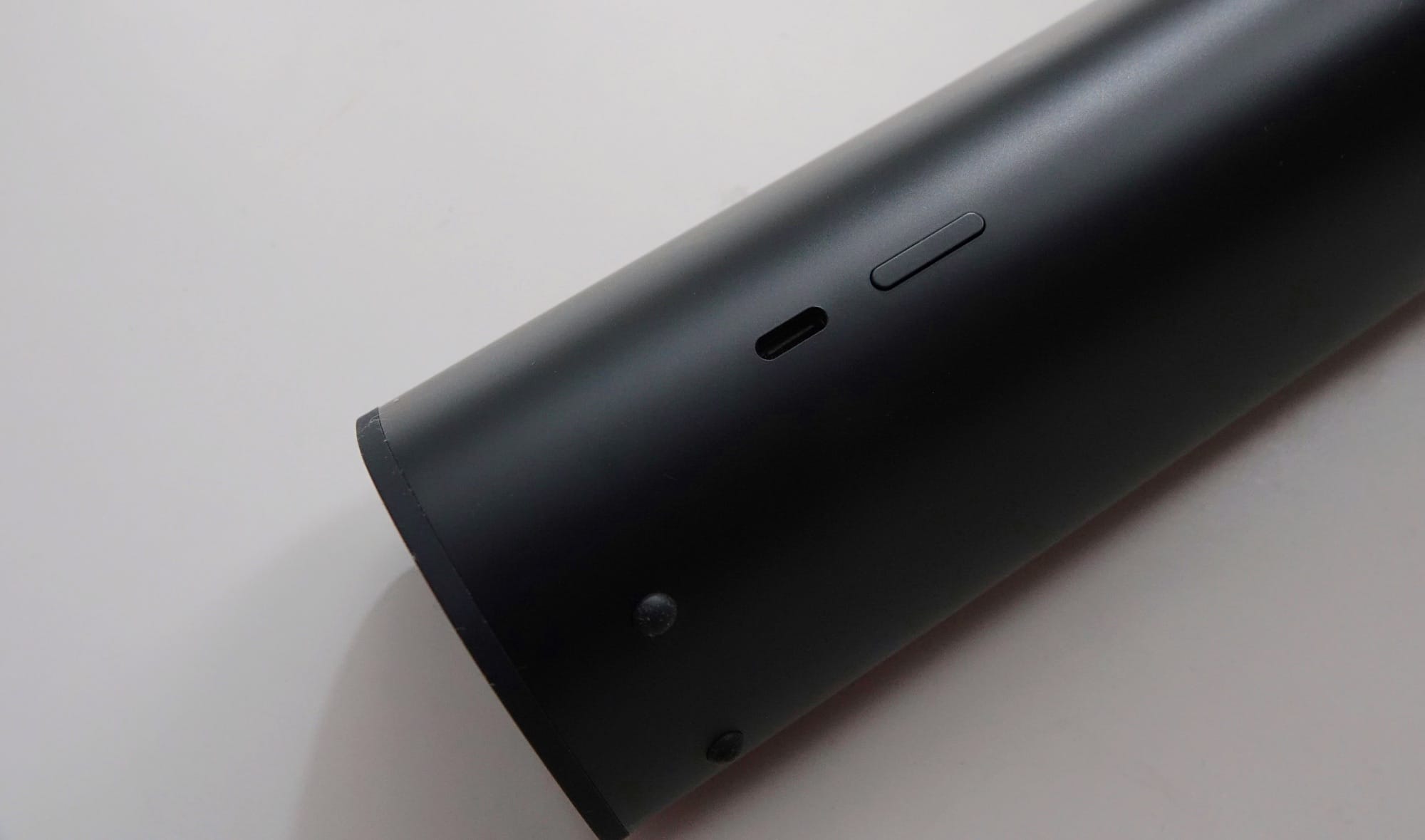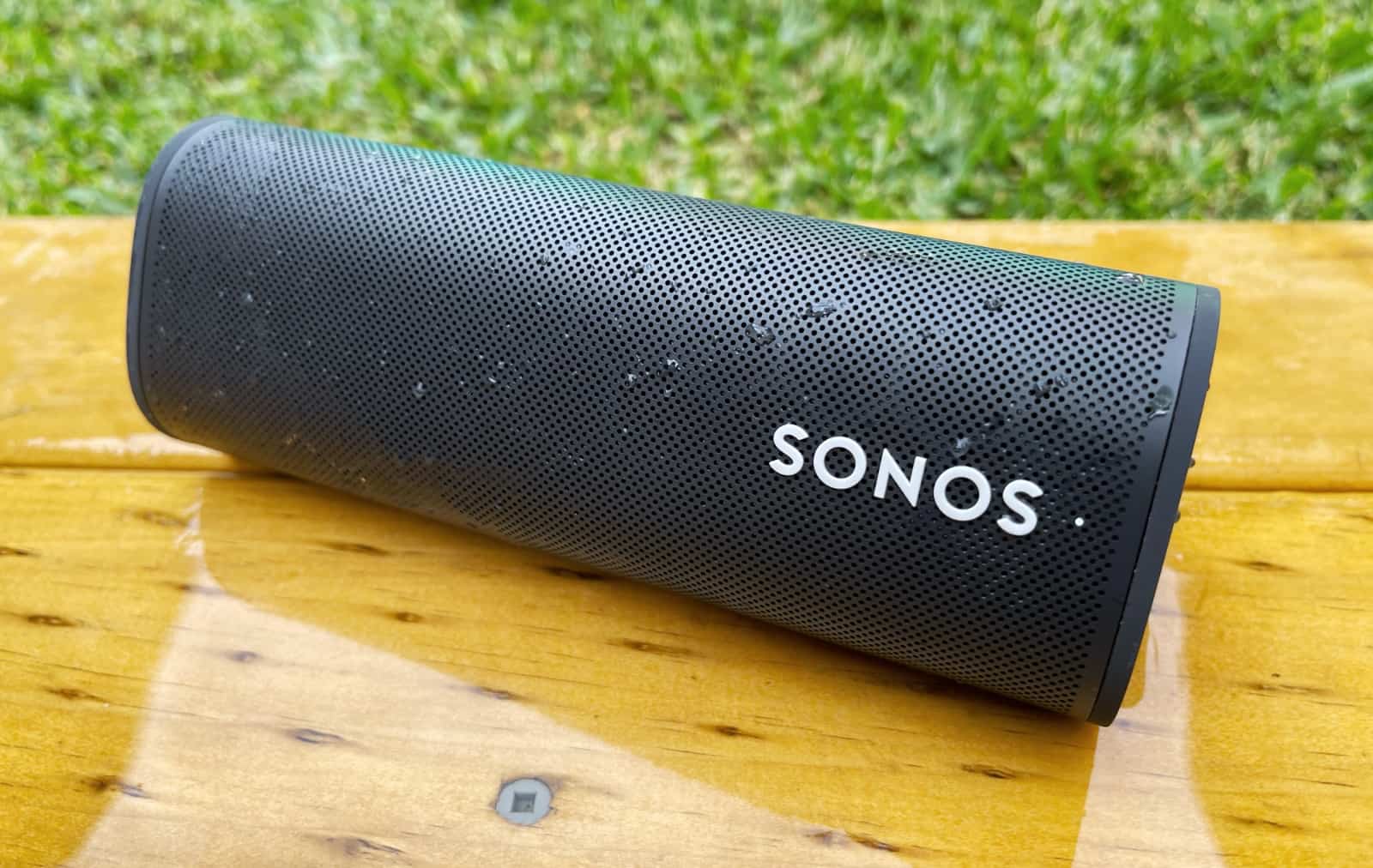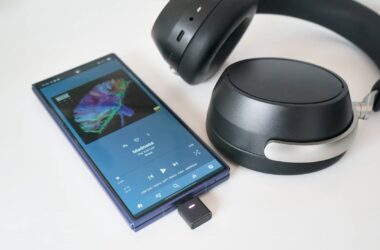Quick review
The good
The not-so-good
If it seems like every brand has a small portable speaker, it’s because it basically does. But few do what the Sonos Roam does, which is basically a pint-sized speaker made for both home and to go.
Music isn’t just for home. It’s for anywhere where you want it to be. That might be home, but it’s often other places, too. Going out with friends, having a picnic in the park, proposing to a loved one.
Taking your music around with you often means having a speaker specifically for it, something many of us do. We’re so used to bringing a wireless speaker made for that purpose — taking sound to go — because that’s what we’ve been made accustomed to. But what if you could take one of your speakers from home, and just carry your sound with you to go? And what if it was so small, it was actually convenient for you to do so?
The Sonos Roam makes that possible, as Sonos builds another of its famed multi-room speakers, but allows you to take it more than just from room to room, but out and about in your regular life, too.
Design and features
Stop us if you’ve heard this one before: like many speakers, the Sonos Roam is very much like a cylinder of sound built to play your tunes and podcasts, and anything else you might want to run through it.
The idea of a cylinder of sound isn’t exactly a new thing. We’ve seen it time and time again, and will likely continue to do so for quite some time. It was the original design of the UE Boom, it’s what Amazon used in its first few Echo models, and it’s not far off what most brands of wireless speakers have tried in the past.
In essence, the cylindrical speaker is a can of sound, and here in the Roam, it’s largely what Sonos is trying to get across, albeit with a few tweaks.
Rather than a perfect cylinder, the Sonos Roam squeezes some of the curves into a slightly softened triangular cylinder. You’ll still likely recognise it as a can, but view it from the top down, and it’s more like a triangle, and that’s entirely intentional.
While the design change makes it not quite a cylinder, the other notable change is the the fact that it can also rest comfortable on one side, meaning like the Sonos Play:5, it can stand up or lie down, dealer’s choice.
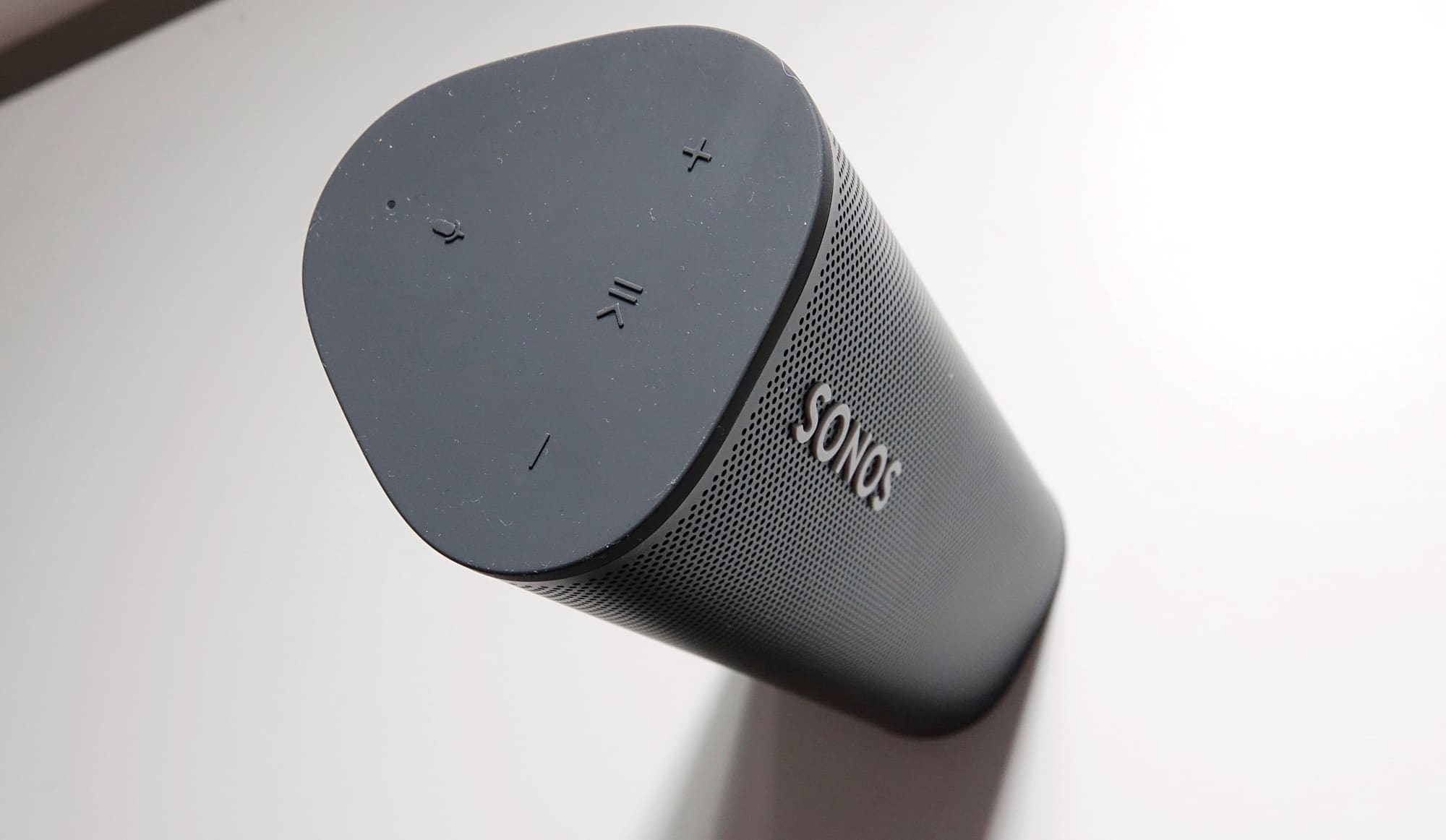
This all sits in a waterproof casing rated for IP67 resistance to the elements, in a package that weighs 430 grams and features not just WiFi and Bluetooth, but a Type C USB port for charging, plus a bottom that supports the Qi wireless charging standard.
The battery in the Sonos Roam is rated for up to ten hours of battery life, and there are physical controls on the top for pause, play, and volume controls, not to mention a power button on the very back.
In-use
Those buttons can help make the Sonos Roam that much easier to use, especially if you’re using your phone, with the etching of the buttons pretty much a dead giveaway to what you’re using, though like other Sonos speakers, the app is excellent, too.
Yes, this is a Sonos speaker like the Sonos One, complete with support for a voice assistant and a microphone button up top.
Honestly, between the Sonos S2 app and the physical buttons, this speaker won’t really confuse anyone. And it’s water-resistant, too, something we tested out quite a few times.
Performance
All that’s left to do is put the sound to the test, which is the thing that really matters here.
It’s a smaller Sonos, partly inspired the Sonos Move, but in a smaller design. That gives Sonos a pretty solid blueprint to work from, though in fairness to the company, pretty much every speaker that comes out of the brand is solid, so it doesn’t exactly need another blueprint to work from.
As usual, we’re running the speaker with the Pickr Sound Test, which you can listen to for yourself, though it’s one we jumped around a bit, as well, hearing the delivery from pop, rock, soul, and other styles with both TruePlay switched on, and TruePlay switched off.
For those playing along at home, TruePlay is Sonos’ automatic tuning feature, which typically uses an iPhone and a sound test to calibrate speakers for an environment. In the Sonos Roam, a microphone can be enabled to automatically work out the right settings for every room all the time.
By default, it’s not switched on here, but as part of the setup, you probably will have it turned on, with a microphone automatically tuning the Roam based on where it is, delivering sound tailored to where you’ve placed the speaker.
It means the Roam can make heads or tails of you using it in the bathroom and your bedroom, with different settings based on what the microphone picks up when you move it, and without any extra work of your own. That can be both good and bad, because sometimes the microphone won’t deliver a tuning you may agree with. Fortunately, you can turn it off and override it, and still enhance the EQ with customised settings for treble and bass.
For our experience, the Sonos Roam delivered relatively impressive balance, working in a lot of the mids and highs of every track we ran through, and was able to flex the muscle of extra bassy tracks when you commanded them, and even sometimes without.
In Marvin Gaye’s “Ain’t No Mountain High Enough”, we found great highs and mids, and a solid but sometimes understated bass. That’s not to say the bass doesn’t pump here in the Roam, though. Find the right song and the right room, and you can make the Sonos Roam punch hard.
At lower volumes, the drum line in Maroon 5’s “Animals” is equally understated against the mids and highs, too, but turn it up and you’ll hear some punch from the bottom end. We heard it on the rock, in Paul Simon and David Bowie, with a solid thwack in the drums, though as we learned, TruePlay may get in the way.
It meant we found the sound of our songs changed based on what TruePlay thought was the right settings, though found the bass could improve depending on where it was placed. Perhaps it was the walls of our kitchen, but we found the Roam delivered a better result in other rooms with TruePlay. In our kitchen, however, we found meatier bass when we switched it off.
Fortunately, you can decide for yourself, because TruePlay doesn’t have to be in. It means if your sound isn’t quite as remarkable as it typically is, you may want to switch TruePlay off and let the Roam just be itself.
In either situation, the Roam delivers, with an excellent balance few small speakers achieve. It’s worth remembering that this is a small speaker, though one that sounds a whole lot bigger. There could be a little more volume, particularly if you want to pump it up loud, but for the size, it’s impressive all the same.
While the aim for the Sonos Roam is a small speaker, the result is something much, much bigger, almost unbelievably so.
Battery
With solid performance comes a battery that is capable, though can feel a touch underwhelming. What we did notice, however, is your use case will likely depend on how you intend to charge the Roam.
Officially, the battery on the Sonos Roam lasts up to ten hours, which isn’t bad, but also isn’t terribly groundbreaking. The UE Boom 3 from 2018 can last up to 15 hours, and while it doesn’t offer multiroom audio, there’s still a noticeable difference in life there.
While we found the ten is possible, the difference tends to come from the technology you’re using. With the Sonos Roam as a Bluetooth speaker, the 10 seems close to legit, but with WiFi and multi room, we saw closer to 7 or 8.
Value
One thing that doesn’t disappoint is the price, which chimes in as the new entry barrier for a smart speaker in the Sonos multiroom system, going from the $299 of the Sonos One to $279 for the Sonos Roam in Australia.
Granted, it’s not the lowest price for a Sonos, because between the less expensive IKEA Symfonisk speakers and the $269 Sonos One SL, you can find models that enter the Sonos multiroom system for lower than the $279 cost of the Roam. However, none of these models support microphones and in turn a voice assistant, and so the Roam gets the cost down for a smart speaker, and one that feels a touch more smart than even the Sonos One.
As it is, the Sonos One is a solid speaker, but at $20 less, the Sonos Roam feels like a better value all around. While it can’t talk to a Sonos soundbar as a rear speaker like how other Sonos speakers can with either the Beam or last year’s Sonos Arc, it can be paired for stereo with another Roam, and sounds excellent as one.
The $279 price is a little more exy than your typical wireless cylindrical Bluetooth speaker, but you also get a little more: while the Roam can be used as a wireless Bluetooth speaker, it can also work as a standard Sonos. Leave it plugged in or sitting on a wireless charger, and the Sonos Roam is like any other Sonos, only smaller and made so that you can take it with you if needed.
In short, the Sonos Roam is basically a smaller Sonos Move at just under half the cost with less volume, which for many will make sense, especially if they’re not sure where they’ll be, and only want to ensure they have great sound here or there.
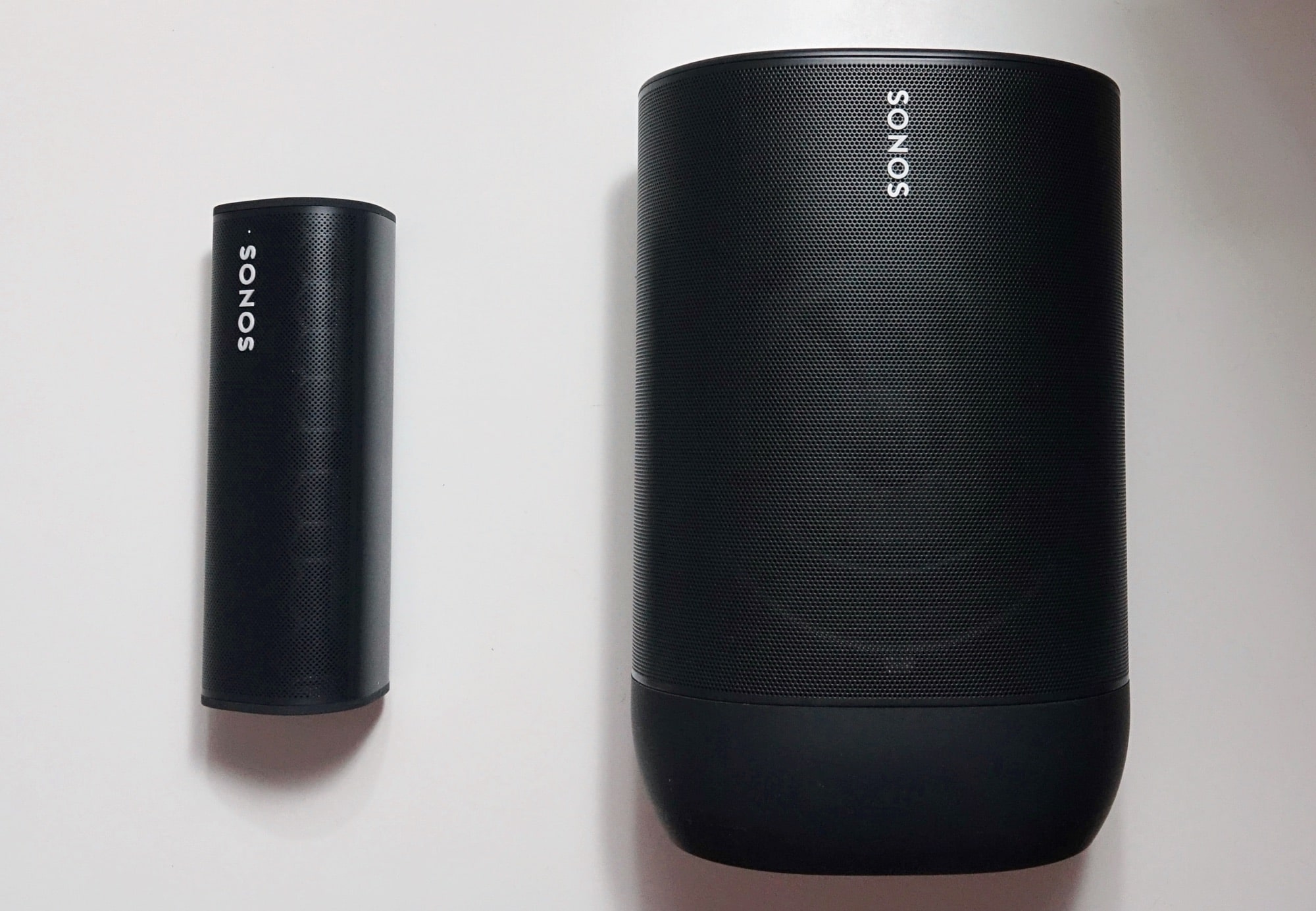
What needs work?
The big win with the Roam is how Sonos has achieved what is basically a brilliant little package in such a small size.
When you pick it up and it’s playing, you can still feel the bass reverberate in a positive way that isn’t overkill. It’s a great sound reminiscent of Sonos’ other speakers, and a worthy addition to take with you or leave at home. The point is you can do both.
Incredibly portable and weather resistant, the Sonos Roam says “take me wherever”. Be it home or to go, the Roam is a speaker for your life.
But it’s also a speaker that could do with some slight improvements, and they might be the very thing that firmware can fix later on.
One of these is from the battery drain, because when the Roam is not in use and not on charge on WiFi, we found it could drain the battery if left on.
Through our Sonos Roam review period, we found the battery could drop a good 30 percent overnight when not plugged in. It went from 100 percent to around 67 percent simply by not being plugged in and not powered down. Technically it was still on and connected to WiFi, but it had no sound going through it. In that, we basically treated it like every other Sonos speaker in our home, even though it’s not the same as a standard speaker.
The settings on the Roam aren’t exactly complex, and so it didn’t have a standby that seemed to cut back on the power consumption. Rather, you basically need to power it down physically using the button on the back or leave it on the charger, otherwise it will just drain in the background.
That makes it a bit of a different Sonos, because while the Sonos Move comes with a dock that leaves it charged and working as a speaker — and in a way that makes the cable rather invisible — the Sonos Roam is either left on your own wireless charger, left plugged in via a USB C cable and to a plug pack of your own, or you can look at the $79 magnetic charger Sonos makes.
Based on our experience during the Sonos Roam review, we’d recommend leaving it on a wireless charger, as that just makes more sense, and good news, because you can use any Qi wireless charging pad, be it the $79 official Sonos one, or a twenty buck one from your local electronics store.
The cheap one won’t clip on magnetically, but it will keep charging your Sonos Roam wirelessly all the same.
We’re not sure we get why the Sonos Roam’s magnetic charger is so exy, given it’s a wireless charger with a magnetic clip, but fortunately, you don’t have to use the one Sonos make. While you can use any USB Type C cable, you can also use any flat Qi-compatible wireless charger, be it the cheap one you can buy from an electronics store, or a MagSafe charger Apple makes for the iPhone 12.
Alternatively, you can power down the Roam like you might any other wireless Bluetooth speaker. That’s one of the main differences between this and other Sonos speakers, because you’ll likely turn it off when not on charge.
Simply put, if you leave it on, expect to leave it charged or in-use. Otherwise, think of the Sonos Roam like you would another wireless speaker, and turn it off when you don’t need to use it. No worries at that point.
Final thoughts (TLDR)
If the goal of delivering the Sonos Move in a smaller size was the intention, it’s pretty clear Sonos has nailed it, or managed to get bloody close with the Roam.
Simply put, the Roam is a success, achieving excellent sound both at home and to go, and making it one of those speakers you’ll want in your life.
At home, the Sonos Roam is another speaker you can rely on to bolster your sound from room to room, just like every other Sonos speaker, except incredibly mobile. And then when you feel like you need to take your sound to go, the Roam is there for you again.
The Roam is such a versatile little speaker and well worth checking out. Highly recommended.



